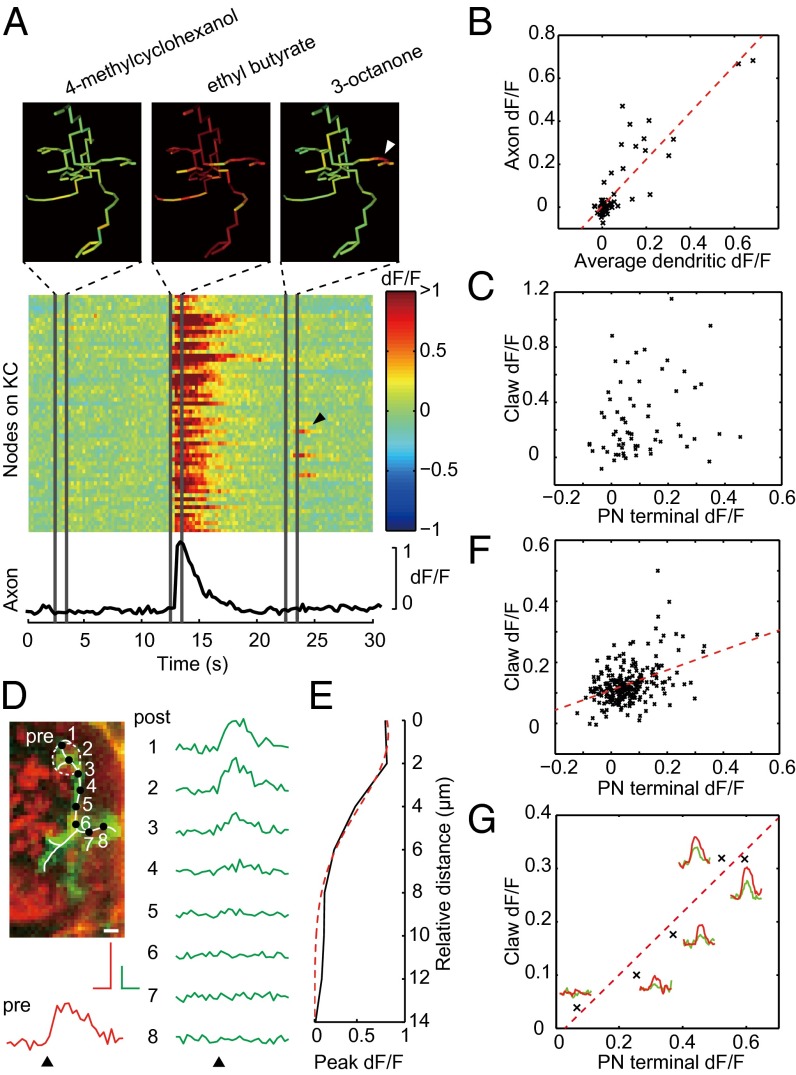Fig. 4.
Odor-evoked calcium transients in single KCs. (A) Odor-evoked calcium transients in the dendrite and axon of a KC. Ethyl butyrate evoked global calcium transient in the entire dendritic tree and the axon, whereas 3-octanone evoked a local calcium transient in a single claw, marked by an arrowhead. (B) Response at the axon was correlated with the occurrence of global calcium transients as reflected by a large average dendritic response; n = 85, R2 = 0.76, P < 0.001. (C) In the presence of global calcium transients, response amplitude of the KC claws did not correlate significantly with presynaptic PN activation; n = 65, R2 = 0.03, P = 0.07. (D) Local calcium transients were localized to KC claws. Response traces of eight nodes along the dendrite are shown in green, and the response trace of the corresponding PN axon terminal (pre) is shown in red. (E) Decay of peak response amplitude along the dendrite shown in D, fitted with a Gaussian curve (red dashed line); R2 = 0.96. (F) Pre- and postsynaptic response amplitudes were significantly correlated in the absence of global calcium transients; n = 240, R2 = 0.18, P < 0.001. (G) Linear relationship between pre- and postsynaptic response from a single claw; n = 5 trials, R2 = 0.94, P = 0.004. The actual response traces are shown, with the red traces from the PN axon terminal and the green traces from the claw. (Scale bar in D, 2 µm.) 1 s, 50% dF/F.

